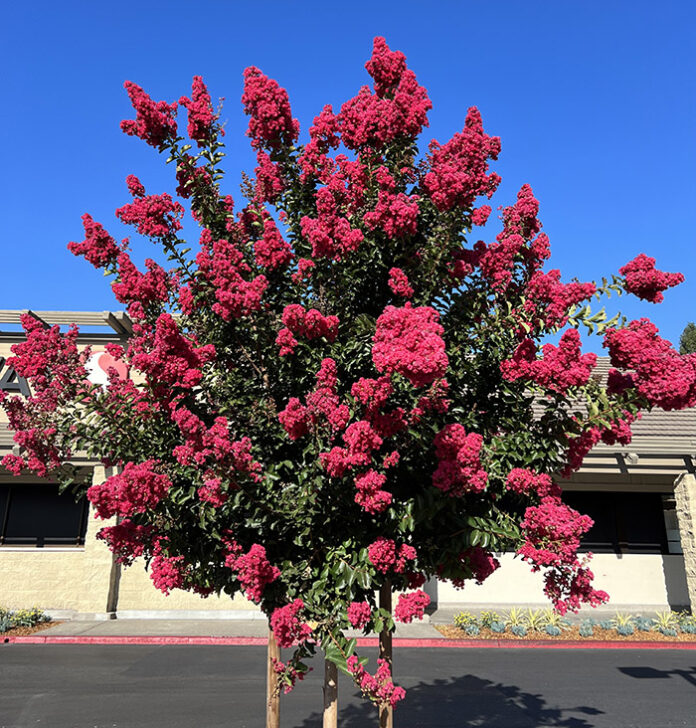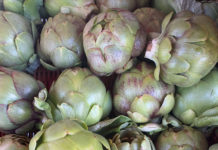
Crepe myrtles are known for vivid colors. This vibrant specimen shames the bright red painted curb at Safeway with a profusion of panicles. A panicle is a loose branching bunch of flowers, or if you prefer: a branched indeterminate inflorescence of racemes with pedicels. I’ll let you break that down.
We get fabulous blue skies here in H’burg after the summer fog burns off. What contrasts the sky’s color better than these fantastic lollipop trees? Crepe myrtle’s colors are better than Crayola crayons—even the ones in the coveted box of 64 with the built-in sharpener. Oh, how I wanted 64 colors. Dang! Just like the colors you see when you slow walk our neighborhood streets. Pretty darn special.
Fun facts: Lagerstroemia is the Latin name for crepe myrtle. Originating in China and Korea, these plants made their way to Charleston, SC about a decade after the American Revolution. Planted in a hedge row, they grow as colorful bushes. Trimmed to a single trunk, they grow into small well-pruned trees. Preferring warm climes, they are found through gardens in the Southern U.S., Southern France, Italy and Spain.
Crayola crayons have been around since 1902, when cousins Binney and Smith took over the Peekskill Chemical Company, which produced two colors: black for tires and red for barns. Binney was the inventor. In 1903, Binney invented non-toxic, sturdy wax sticks (crayons) with brighter colors.
In 1904, Binney invented dustless chalk. Weighted particles of chalk fell to the ground, eliminating cough producing clouds in classrooms. Perhaps you remember chalk dust cascading down a blackboard? Thank Binney.
Thank Binney’s wife, Alice, for the cool Crayola name. Crayola merges the French word for chalk, “crai,” with “ola,” the Latin root for oily. The 64-box with the built-in sharpener, yup pretty darn special. Well, that classic box was developed in 1958. Crayola was sold to Hallmark in 1984 for $204 million.







